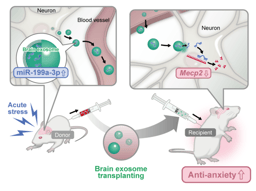A singular plasmonic-thermoelectric hollow nanostructure inducing apoptosis and cuproptosis for catalytic cancer therapy
Thermoelectric catalytic therapy (TECT) is an emerging therapeutic approach that relies on the conversion of thermal energy to electricity via a temperature gradient, activating reactive oxygen species (ROS)-enabled catalytic therapy. However, TECT is still in the initial stage in the biomedical field nowadays, because the limited temperature variations in living organisms induce a low separation efficiency of electron-hole in thermoelectric material, which results in inadequate ROS yield and low therapeutic efficiency. Hence, it is imperative to develop a localized heat source that only heats the thermoelectric material to achieve a satisfactory effect.
Plasmonic nanostructures, capable of absorbing and converting light into heat, offer a promising solution for generating localized heat efficiently. Plasmonic heat can be dynamically controlled by external light irradiation, making it a versatile, fast, and controllable localized heat source. Plasmonic photo-thermoelectric conversion, as a novel energy conversion modality, can significantly enhance thermoelectric efficacy. However, the current approach is strongly reliant on the combination of plasmonic and thermoelectric materials to realize energy transfer, such as hybrids of Pt/CoFeB, Au-Si/Bi2Te3, and Ag/PEDOT:PSS. Therefore, it is challenging to achieve plasmonic thermoelectric effects in a single material to avoid biosafety issues caused by material complexity. Till now, research on plasmonic thermoelectric therapy is still lacking.
In this contribution, we for the first time proposed a “one-for-all” strategy based on copper vacancies (VCu)-rich Cu2−xSe hollow nanospheres (HNSs), to simultaneously achieve plasmonic photothermal therapy, TECT, heat-enhanced enzymatic catalytic therapy, and cuproptosis in a single material mediated by near-infrared II (NIR-II) light. Compared with previous studies, our work has the following advantages.
Advantages of “one-for-all” function. A single urchin-like Cu2−xSe HNS was prepared by Kirkendall effect. The plasmonic absorption of Cu2−xSe HNSs from the rich VCu induces ultra-high photothermal conversion efficiency (67.0%), thus activating thermoelectric catalysis and heat-enhanced enzymatic catalysis to generate toxic ROS for therapy. Even better, Cu2−xSe is a suitable copper-carrier, which can result in the accumulation of copper in cancer cells, leading to a special form of programmed cell death of cuproptosis.
Mechanism innovation of plasmonic TECT. The newly emerging TECT is still in the initial stage, because the limited temperature variations in living organisms induce a low ROS yield. We firstly proposed a plasmonic TECT by combining plasmonic photothermal and thermoelectric catalysis using singular Cu2−xSe, which can increase the temperature variation of the tumor sites, achieving high TECT efficacy.
Deep catalytic mechanism study using theoretical calculation. Density functional theory (DFT) calculations were used to study the thermoelectric and enzymatic catalysis mechanisms. The results revealed that the vacancy-augmented thermoelectric catalytic effect is owing to the high carrier concentration and mobility of Cu. Moreover, DFT calculations also show that the presence of VCu will facilitate the formation of OH species and is favorable for the peroxidase- and catalase-like activities.
Dual cell death pathways of cuproptosis and apoptosis. Under NIR-II irradiation, the above photothermal effect, generated ROS, and accumulation of copper from Cu2−xSe HNSs, may result the aggregation of lipoylated proteins, loss of Fe-S cluster proteins and induce cascade reactions for caspase pathway, ultimately lead to cell death by cuproptosis and apoptosis pathways.
Follow the Topic
-
Nature Communications

An open access, multidisciplinary journal dedicated to publishing high-quality research in all areas of the biological, health, physical, chemical and Earth sciences.
Related Collections
With Collections, you can get published faster and increase your visibility.
Women's Health
Publishing Model: Hybrid
Deadline: Ongoing
Advances in neurodegenerative diseases
Publishing Model: Hybrid
Deadline: Dec 24, 2025




Please sign in or register for FREE
If you are a registered user on Research Communities by Springer Nature, please sign in